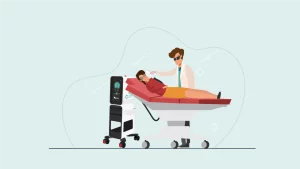Introduction to Eyelash Extensions
What are eyelash extensions and why are they so popular?
Eyelash extensions are semi-permanent fibers applied to the natural lashes using a specialized adhesive. They are available in various materials including synthetic, silk, and mink, and they come in different lengths, curls, and thicknesses to enhance the appearance of natural lashes. The main appeal of eyelash extensions lies in their ability to add volume, length, and definition to the eyes without the daily hassle of applying mascara or falsies.
Their popularity has exploded in recent years due to the convenience and aesthetic enhancement they offer. However, despite their appeal, it’s important to recognize the potential side effects and health implications, particularly for individuals with sensitive eyes or preexisting eye conditions.
Common Side Effects of Eyelash Extensions
What are the allergic reactions associated with eyelash extensions?
One of the most common side effects is an allergic reaction to the adhesive used. The glue often contains cyanoacrylate, a compound that can release formaldehyde when it cures. This chemical is known to cause irritation, especially in individuals with sensitive eyes. Symptoms of an allergic reaction include redness, swelling, itching, and a burning sensation around the eyes and eyelids.
These reactions can occur immediately or may develop after multiple uses as the body becomes sensitized over time. It’s important to perform a patch test before application and to choose adhesives labeled as formaldehyde-free or hypoallergenic.
What types of infections can result from eyelash extensions?
Infections are another significant concern with eyelash extensions. If the application tools or materials are not properly sanitized, bacteria can enter the eye area, leading to conditions like dry eye, blepharitis (inflammation of the eyelids), conjunctivitis (pink eye), and even styes. In some cases, poor hygiene during or after the application can cause bacterial buildup, further increasing the risk of infection.
It is crucial to ensure that your technician adheres to strict hygiene standards, including sterilizing tools and using disposable applicators when possible. Infections may therefore be the result of a lack of information on this subject. Clients should also be instructed on how to maintain lash hygiene post-application.
Do lash extensions damage your real lashes?
Yes, lash extensions can damage your natural lashes if not applied or maintained correctly. The added weight of the extensions can strain the natural lash follicles, causing premature shedding or even long-term thinning. In some cases, the constant cycle of applying and removing extensions can weaken the lashes and make them more prone to breakage.
Damage can also occur when clients rub their eyes, tug at the extensions, or attempt to remove them without professional help. It’s essential to follow aftercare instructions and avoid oil-based makeup or skincare products around the eyes, as these can break down the adhesive and lead to loss.
How do eyelash extensions contribute to dry eyes?
Dry eyes are a lesser-known but increasingly reported side effect of eyelash extensions. The extensions can interfere with the natural tear film and blinking process. Longer and thicker extensions may prevent the eyelids from closing completely, leading to increased tear evaporation. Additionally, some adhesives emit fumes that can irritate the eye and destabilize the tear film, leading to dry eye.
People who already suffer from dry eye syndrome may find their symptoms worsen after getting lash extensions. Symptoms such as a gritty sensation, redness, blurred vision, and a feeling of dryness can intensify. Using artificial tears and selecting a lash style that doesn’t obstruct natural eyelid movement can help mitigate this issue.
Factors Contributing to Side Effects
How does the quality of materials influence the risk of side effects?
The materials used in lash extensions and adhesives greatly influence the risk of side effects. Low-quality glues may contain harsh chemicals and unregulated ingredients that increase the risk of allergic reactions and irritation. Similarly, synthetic lashes that are overly stiff or heavy can strain the natural lashes and irritate the eyelids.
Choosing high-quality, medical-grade adhesives and soft, lightweight lashes can significantly reduce complications. Reputable salons typically invest in safer materials and are transparent about their product choices.
Why is the expertise of the technician crucial?
The skill and experience of the lash technician are paramount. An unqualified technician may use too much adhesive, place extensions too close to the eyelid, or choose lashes that are too heavy for your natural ones. These mistakes can lead to discomfort, infections, and damage to your real lashes.
A certified and experienced lash technician understands how to customize the application based on the client’s eye shape, lash health, and lifestyle. They also follow safety protocols that protect the client from unnecessary risks.
What hygiene practices should be followed during the application?
Hygiene is a critical factor in preventing infections and irritation. Lash technicians should wash their hands thoroughly, use sanitized tools, and work in a clean, dust-free environment. They should also use single-use applicators and avoid double-dipping into product containers.
Clients should arrive with clean eyes, free of makeup, and avoid touching or rubbing their eyes after the application. Regular cleaning with a lash-safe cleanser is recommended to remove debris and oils that could harbor bacteria.
How to Minimize Risks
Do you need to take a break from eyelash extensions?
Yes, taking breaks between extension cycles can help maintain lash health. Continuous wear without rest can exhaust the hair follicles and cause thinning oh the eyelashes. A break of a few weeks allows natural lashes to regenerate and recover from the weight and adhesive exposure.
During this time, nourishing treatments like castor oil or lash growth serums can be used to strengthen and promote lash growth. It also gives the eyes a chance to rest and reduces the cumulative exposure to potential irritants.
What are the proper guidelines for eyelash extensions?
To minimize danger:
- Only use licensed and trained lash technicians
- Ensure a patch test is performed before the first application
- Avoid oil-based products near the eyes
- Clean lashes regularly with a gentle, oil-free cleanser
- Never attempt to remove the eyelash extensions yourself—have them removed professionally
- Do not rub or pull at your lashes
Following these guidelines can help ensure a safer and more comfortable experience with lash extensions, for results relating to eye protection.
Alternatives to Eyelash Extensions
What are some safe and temporary alternatives to eyelash extensions?
If you’re concerned about the potential side effects of eyelash extensions, there are safer and lower-risk alternatives that can still enhance your lashes:
- Magnetic False Lashes: These are one of the safest alternatives. They use magnetic eyeliner instead of glue, minimizing the problem of irritation or allergic reactions. They are easy to apply, reusable, and ideal for people with sensitive or dry eyes.
- Clean Mascara Formulas: Choosing high-quality mascaras with gentle, non-toxic ingredients can also deliver volume and definition without compromising eye health. Look for formulas labeled as ophthalmologist-tested, fragrance-free, and safe for sensitive eyes.
- Natural Beauty: Embracing your natural lashes can be the healthiest option of all. A well-balanced eye care routine, proper lash hygiene, and lash-conditioning serums can improve the appearance of your natural lashes over time. Beauty starts with health, and prioritizing your eye comfort over cosmetic trends is always a wise choice.
If you need more information on make-up and dry eyes, click here




